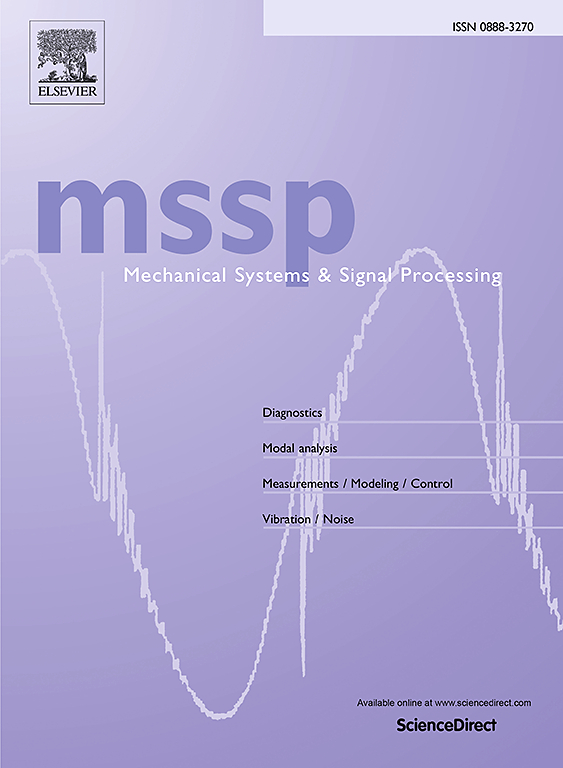Cavitation intensity recognition for axial piston pump based on transient flow rate measurement and improved transfer learning method
IF 7.9
1区 工程技术
Q1 ENGINEERING, MECHANICAL
引用次数: 0
Abstract
Cavitation phenomenon occurred in the axial piston pump will lead to damages inside the pump as well as vibration and noise in the pipeline system, which makes the cavitation monitoring become a much concerned topic. Compared with the pressure pulsation, the flow ripple of the pump could reflect the cavitation intensity more directly, because the flow ripple is independent on the pipeline and the load valve. This paper proposes a temporal-spatial method of characteristics (TSMOC) to calculate the exact flow rate at the pump discharge, using two measured pressures along the pipeline. The basic idea is treating two pressures as the boundaries, achieving time-marching scheme of flow ripples within the boundaries and space-marching scheme towards the pump discharge port. The TSMOC is verified numerically compared with results of computational fluid dynamic (CFD) simulation. As such the pump’s flow rate is obtained based on measured pressures, and a flow dataset can be created for training the artificial neural networks. For pumps operate under various working conditions, a transfer learning method is introduced due to its strong domain adaption ability, to recognize new tasks with minimal additional training. However, the present transfer learning methods may not achieve high accurate performance because their feature extractors do not suit cavitation features. To improve the recognition accuracy, a novel method with dual path attention mechanism (DPAM) combined with the architecture of correlation alignment (CORAL) method, called DPAM-CORAL, is proposed. To validate the effectiveness of the flow dataset and the learning method, the test rig for the pump cavitation is established and experiments are carried out. The results indicate that the proposed DPAM-CORAL based on the flow dataset could achieve an average recognition accuracy of 98.0%, which is the highest among all the learning methods. It is also demonstrated that the cavitation recognition based on the flow dataset is more accurate than that based on the pressure dataset. The proposed TSMOC method and improved transfer learning method in this work are proven to be effective and accurate.
求助全文
约1分钟内获得全文
求助全文
来源期刊

Mechanical Systems and Signal Processing
工程技术-工程:机械
CiteScore
14.80
自引率
13.10%
发文量
1183
审稿时长
5.4 months
期刊介绍:
Journal Name: Mechanical Systems and Signal Processing (MSSP)
Interdisciplinary Focus:
Mechanical, Aerospace, and Civil Engineering
Purpose:Reporting scientific advancements of the highest quality
Arising from new techniques in sensing, instrumentation, signal processing, modelling, and control of dynamic systems
 求助内容:
求助内容: 应助结果提醒方式:
应助结果提醒方式:


